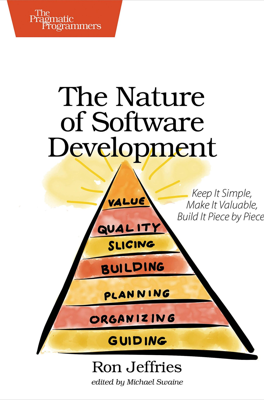Bug-Free and Well Designed
Ensuring Software Quality Through Good Technical Practices
Key Practices for Feature-Based Development: Developers must concentrate on building a product comprised of a connected series of fully functioning features, each improving upon the foundation of design. This progression requires constant verification and improvement of the design quality to steer projects towards success.
The Impact of Defacts: Defects represent setbacks, termed as negative features, which obscure progress and complicate project management. Immediate and ongoing rectification of these defects is crucial.
Testing Strategies: - Continuous Comprehensive Testing: As new features are added and the software design evolves, the complexity and scope of testing must increase. This includes both automated and manual testing to ensure older features remain unaffected by new additions. - Business-Level Tests: These are essential after every development iteration to ensure the newly added features perform as expected without breaking existing functionalities. - Developer-Level Tests (TDD): Test-Driven Development involves writing tests before the actual feature development begins, helping developers identify and fix issues more efficiently.
Advantages of Rigorous Testing: 1. Prevention Over Cure: Continuously testing prevents defects from entering the software, reducing the time and cost of fixing issues later. 2. Speed in Development: Frequent testing and immediate defect resolution allow teams to proceed faster than the traditional methods where extensive testing is done only after development.
Design and Refactoring: - Starting Simple and Evolving: The software design should start simple and evolve in complexity with each feature addition. This keeps the design manageable and adaptable. - Refactoring: Continuous refining and restructuring of the codebase — known as refactoring — is necessary to accommodate new features without degrading the software's overall design. - Preserving Design Quality: A deteriorating design increases the difficulty and cost of adding new features. Regular refactoring helps maintain the usability and expandability of the software.
Testing and Refactoring as Essentials: - Together, rigorous testing and proactive refactoring enable the successful implementation of a feature-by-feature development strategy. These practices ensure reliability and maintainability, preventing performance degradation over time.
Additional Recommendations: For comprehensive coverage on how to enhance skill development and effective refactoring practices, further reading is recommended from Chapter 18: To Speed Up, Build with Skill, and Chapter 19: Refactoring. Understanding team dynamics in this context can be further explored in Chapter 14: Creating Teams That Thrive and dealing with productivity in Chapter 17: Whip the Ponies Harder.
These principles and practices set the groundwork for delivering high-quality software incrementally, ensuring each part of the project aligns closely with both business needs and user expectations.
